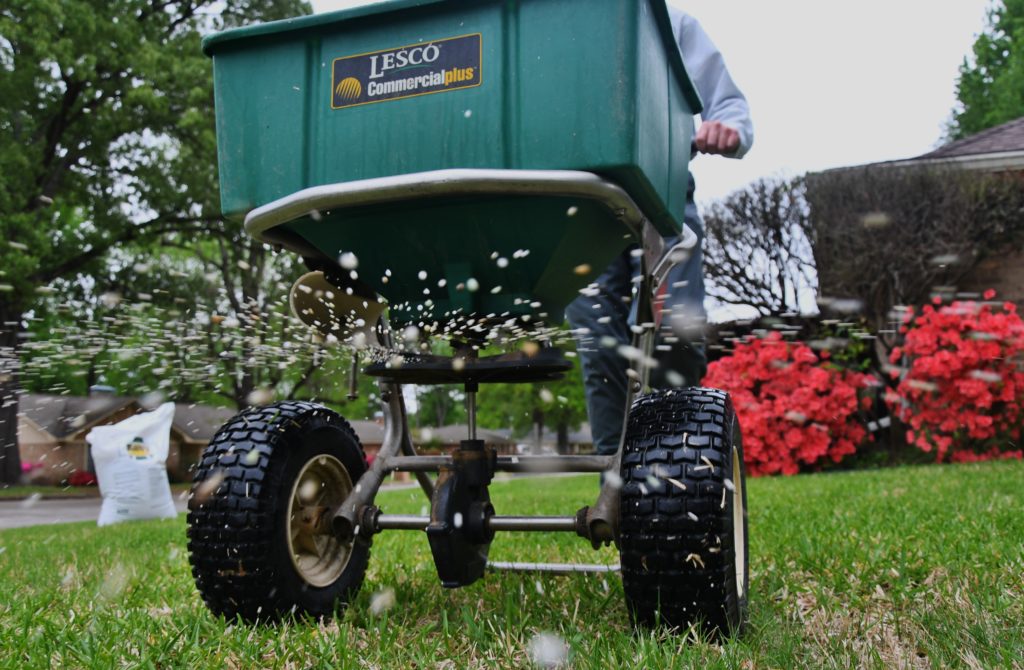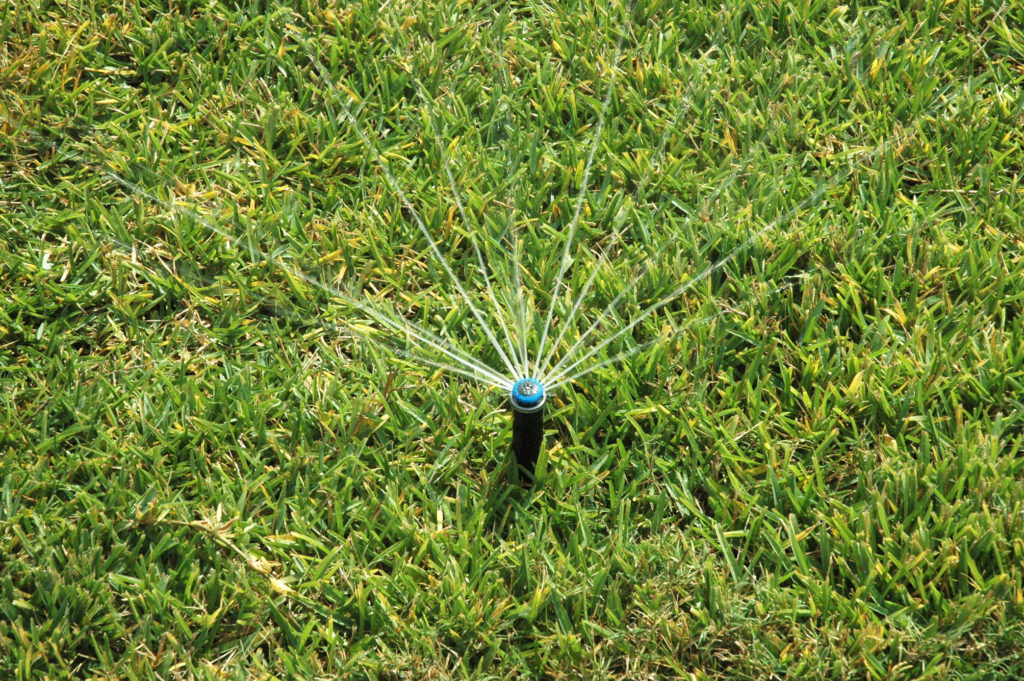How to get a beautiful lawn
Start now on this to-do list to help lawns perform well through summer
Even amateur lawn-lovers can get a beautiful lawn with professional-level turfgrass by implementing an appropriate care and maintenance regimen, according to a Texas A&M AgriLife Extension Service expert.
Becky Grubbs, Ph.D., AgriLife Extension turfgrass specialist, College Station, shared her springtime checklist for how homeowners can produce and maintain the best lawn in the neighborhood.
Beautiful lawn to-do list:

Control winter annual weeds
Grubbs said post-emergence herbicide treatments may be less effective at this point in the season when dealing with frustrating winter annual weeds like henbit, burclover and annual bluegrass. Large, established weeds are much more challenging to control with herbicides than smaller, immature weeds.
Additionally, overapplication of select herbicide products can be disruptive to spring green-up and turfgrass health during a critical time of year. Instead, homeowners can rely on a combination of mechanical removal and mowing until weeds begin their dieback in the spring.
Bag the clippings and dispose of them, she said, to limit seeding.
“The key is to prevent undesirable plants from flowering or spreading seeds,” she said. “As these weeds begin to flower, bagging clippings can prevent reseeding and reduce next year’s populations.”
Grubbs also recommends homeowners consider a fall preemergence herbicide application next year if they feel frustrated with weeds this year.
“An application made in the fall, when soil temperatures reach around 70 degrees, can make a significant difference in the amount of weed pressure faced on the lawn during the winter,” she said.
Conduct a soil test
Grubbs said February and March are ideal times to test the soil and prepare a fertilizer plan for warm-season turfgrass.
“Testing by March allows at least one month to receive your soil test results, customize your nutrient management plan, and purchase any products you may need,” she said. “A balanced approach to fertilization helps turfgrass compete against weeds and undesirable plants.”
Don’t fertilize too much or too early
Grubbs said soil tests and turfgrass variety will determine individual lawn’s fertilizer regimen. But it’s important to avoid overdoing it and poorly timing the applications.

Early or excessive fertilizer applications can have significant consequences for a homeowner’s pocketbook, the environment and the health of the turfgrass lawn. Soluble or quick-release fertilizer products should not be applied until turfgrass lawns are mowed at least twice for the season, as this indicates turfgrass is actively growing and will utilize the nutrients applied.
Some slow-release or organic products may be applied earlier. Follow the label recommendations and contact the local AgriLife Extension county agent for assistance in determining what timing is appropriate for individual lawns.
“Sometimes there is confusion around timing as people will confuse fertilizer applications with their spring pre-emergence herbicide timing,” she said. “These are two different practices that should be considered separately.”
Grubbs said too much fertilizer, or fertilizer applied too early or too late in the season, may increase susceptibility to turfgrass diseases like Large Patchand possibly lead to environmental pollution and contamination of water resources.
“Not to mention the fact that you just will not get as much bang for your buck if you are applying these products inappropriately,” Grubbs added. “No one wants to waste their money.”
Don’t water your grass right now

Grubbs said it’s never surprising to see sprinklers irrigating lawns through winter, but in general this is considered an irresponsible practice for Texas landscapes.
“Not only is this a waste of our Texas water resources, but you may be doing harm to your turfgrass lawn or even creating hazardous ice patches around your property when we are still experiencing freezing temperatures,” Grubbs said.
As a general rule of thumb, most established warm-season turfgrass lawns in Texas only require supplemental irrigation during the warmest months of the year, which generally fall between May and September. The appropriate amount will vary based on the turfgrass species and the climate conditions. For additional guidance on watering, visit the Texas ET Network or AggieTurf.
“A good rule of thumb is to not start irrigating until you’ve mowed your turfgrass at least twice,” she said. “That way you know that your turfgrass is actively growing. Don’t forget to adjust your irrigation throughout the season based on precipitation.”
Apply spring preemergence herbicide for summer annual weeds
Grubbs said homeowners can prepare to apply preemergence herbicides to deal with summer annuals. Soils temperatures should be around 55 degrees Fahrenheit before application.
“A good indicator that it is time to apply spring preemergence products is that you may see redbuds blooming,” she said.
Grubbs said homeowners should monitor temperatures closely this year because winter weather has been milder than usual and select summer annual weeds may begin to germinate early.
Maintain your lawn equipment
Grubbs said March and April are the perfect times to evaluate and make any needed repairs to lawncare equipment, including sprinkler systems and mowers.
For sprinklers, homeowners should check for leaks, faulty or misdirected sprinkler heads and measure the precipitation rate with a catch-can audit. Homeowners less comfortable with this process can hire a licensed irrigator to perform a professional irrigation audit.
“You don’t want to turn on your sprinkler in June when it’s 100 degrees and find out there are problems,” she said. “Additionally, familiarizing yourself with your irrigation system now will make it easier to water appropriately throughout the season.”
Lawnmowers are the same, she said. Blades should be sharpened and cleaned prior to use to ensure a sharp, healthy cut.


